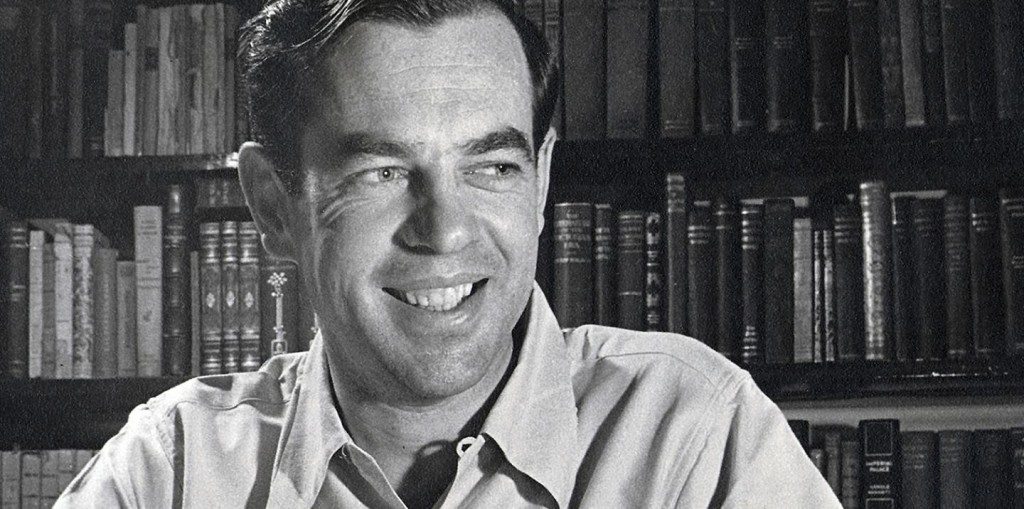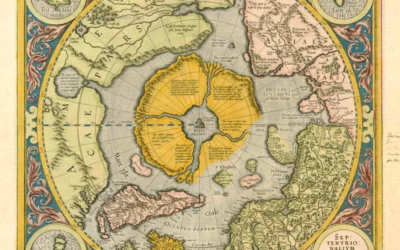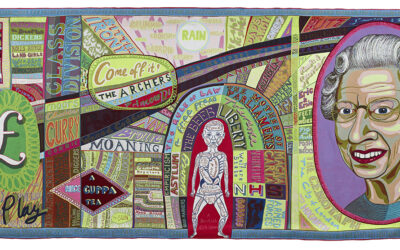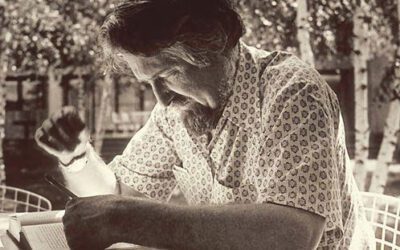Illuminating the Hero’s Journey of the Human Soul

by [Author Name] | [Date]
“Myth is much more important and true than history. History is just journalism and you know how reliable that is.”
– Joseph Campbell
1. Who was Joseph Campbell
Joseph Campbell (1904-1987) was an American mythologist, writer, and lecturer, best known for his work in comparative mythology and religion. His work is vast, covering many aspects of the human experience.
Campbell’s lifelong fascination with myth and his deep knowledge of religions, literature and philosophy, allowed him to articulate the common themes and archetypes found in mythologies across cultures and throughout history. His most well-known work, “The Hero with a Thousand Faces” (1949), outlines the monomyth, or the hero’s journey, a common structure found in myths and stories worldwide.
Campbell’s theories have influenced a wide range of fields, including literature, anthropology, psychology, and film. Directors like George Lucas and Steven Spielberg have acknowledged Campbell’s influence on their work. His ideas continue to resonate in our culture, providing a framework for understanding the universal human need for meaning and the role of myth in fulfilling that need.
This essay provides an in-depth exploration of Campbell’s life, key ideas, and enduring legacy. By tracing the development of his thought and the major themes in his work, we gain insight into the profound ways in which myth shapes our individual and collective lives. Campbell’s work is not just about understanding the myths of the past, but about recognizing the mythic dimensions of our own experience and the vital role of myth in navigating the challenges of the modern world.
2. The Life and Academic Career of Joseph Campbell
Early Life and Education
Joseph Campbell was born on March 26, 1904, in White Plains, New York.
In 1921, he graduated from Canterbury School in New Milford, Connecticut.
He received his B.A. in English literature in 1925 and his M.A. in Medieval literature in 1927, both from Columbia University.
The Shaping of a Mythologist
In 1927, Campbell traveled to Europe, where he was introduced to the work of modernist writers like James Joyce and Thomas Mann, who would significantly influence his thinking about mythology.
He learned Sanskrit and began to read extensively in Asian religious and philosophical texts.
Returning to Columbia in 1928, he pursued his Ph.D. studies in Medieval literature but ultimately withdrew from the doctoral program in 1929.
During the early 1930s, Campbell encountered the work of Sigmund Freud and Carl Jung, which deepened his understanding of the psychological dimensions of myth.
Teaching Career
In 1934, Campbell accepted a position teaching literature at Sarah Lawrence College, where he would remain for 38 years until his retirement in 1972.
At Sarah Lawrence, Campbell developed an experimental curriculum centered around myth and comparative religion.
He used world literature to introduce students to the archetypal themes and symbols found in mythologies across cultures.
Major Publications and Later Years
Campbell’s first major work, “A Skeleton Key to Finnegans Wake” (1944), co-authored with Henry Morton Robinson, is a critical analysis of James Joyce’s final novel.
His seminal work, “The Hero with a Thousand Faces” (1949), outlines the monomyth, or hero’s journey, which Campbell identified as a universal pattern in mythological narratives worldwide.
In the 1960s, Campbell published his four-volume magnum opus, “The Masks of God”, which traces the development of mythology from primitive to modern times.
After retiring from Sarah Lawrence in 1972, Campbell focused on writing and lecturing.
In the 1980s, he collaborated with Bill Moyers on the PBS series “The Power of Myth”, which introduced his ideas to a wide public audience.
Campbell died on October 31, 1987, at his home in Honolulu, Hawaii.
3. Key Ideas and Theories
3.1 The Monomyth and the Hero’s Journey
One of Campbell’s most influential contributions to the study of mythology is his concept of the monomyth, or the hero’s journey. In “The Hero with a Thousand Faces“, Campbell argues that the myths of cultures around the world, despite their apparent diversity, share a common structure.
The hero’s journey typically begins with the hero in the ordinary world, where they receive a call to adventure. Initially reluctant, the hero eventually crosses the threshold into a supernatural or unfamiliar realm, where they face trials and temptations. With the help of mentors and allies, the hero undergoes a supreme ordeal, often resulting in an apotheosis or symbolic death and rebirth. The hero then returns to the ordinary world, bearing some elixir or boon that benefits their community.
For Campbell, this recurring pattern reflects the universal human need for psychological and spiritual growth. The hero’s outward journey mirrors an inward journey of transformation, as the individual confronts their fears, limitations, and illusions, and discovers their true identity and purpose.
3.2 The Functions of Myth
Campbell identified four primary functions that myths serve in human societies:
The Mystical Function:
Myths awaken a sense of awe and mystery, opening individuals to a dimension of reality beyond the mundane.
The Cosmological Function:
Myths provide a cosmology or image of the universe that aligns with the science of the time and place.
The Sociological Function:
Myths validate and support the existing social order, providing models for behavior and social roles.
The Pedagogical Function:
Myths guide individuals through the stages of life, teaching them how to live in accord with their culture’s values and beliefs.
For Campbell, myths are not merely primitive explanations for natural phenomena or historical events, but profound expressions of the human psyche and spirit. They serve to connect individuals to something greater than themselves, providing meaning, guidance, and a sense of belonging.
3.3 Myth and the Individual
Campbell was deeply influenced by the work of psychologists Sigmund Freud and Carl Jung, particularly Jung’s concept of the collective unconscious and its archetypes. For Campbell, myths are symbolic expressions of these archetypes, which represent universal patterns of human experience and behavior.
By engaging with mythic symbols and narratives, individuals can tap into these archetypal energies and integrate them into their conscious lives. This process of individuation, as Jung called it, is essential for psychological wholeness and maturity.
Campbell also emphasized the importance of following one’s bliss, or true calling in life. He believed that by aligning oneself with their deepest passions and talents, individuals could connect with the mythic dimension of their own experience and live a more authentic and fulfilling life.
3.4 Comparative Mythology and the Perennial Philosophy
Campbell’s work is characterized by a comparative approach to mythology, in which he identifies common themes, symbols, and patterns across cultures and religious traditions. This approach reveals what Campbell called the “perennial philosophy“, a set of universal truths about the nature of reality and the human condition that transcends any particular culture or era.
For Campbell, all the world’s mythologies and religions point to the same fundamental insights, such as the unity of all life, the illusory nature of the ego, and the need for self-transcendence. By recognizing these common threads, individuals can gain a deeper appreciation for the wisdom of other cultures and find new ways to express the eternal truths in their own lives.
3.5 Mythology in the Modern World
Campbell believed that the modern world is in a state of mythological crisis. The traditional myths and religions that once provided meaning and guidance have lost their power, leaving individuals adrift in a sea of relativism and nihilism.
At the same time, Campbell saw the emergence of new myths in the works of modern artists, writers, and filmmakers. These creative individuals tap into the archetypal dimensions of the psyche and give expression to the eternal themes of the human experience in new forms.
For Campbell, the task of the modern individual is to create their own mythology, drawing on the wisdom of the past but adapted to the unique challenges and opportunities of the present. This creative mythology is not a rejection of tradition, but a revitalization of it, allowing the eternal truths to find new expression in a changing world.
4. Influences and Legacy
Campbell’s work has been influential across a wide range of fields, from literature and film to psychology and religious studies. Some of the key figures and movements that have been influenced by his ideas include:
George Lucas, who has acknowledged Campbell’s influence on the Star Wars films.
The filmmakers of the “myth-arc” of The X-Files, who drew on Campbell’s hero’s journey model.
The positive psychology movement, which echoes Campbell’s emphasis on following one’s bliss and finding meaning in life.
The men’s movement of the 1980s and 1990s, which used Campbell’s ideas about myth and masculinity to promote personal growth and social change.
The study of world religions and comparative mythology, which has been enriched by Campbell’s cross-cultural approach and emphasis on the perennial philosophy.
Campbell’s legacy continues to inspire new generations of scholars, artists, and seekers who find in his work a rich resource for understanding the human experience and navigating the challenges of the modern world.
5. Criticism and Controversies
While Campbell’s work has been widely celebrated, it has also been the subject of criticism and controversy. Some of the main critiques include:
Oversimplification: Some scholars argue that Campbell’s monomyth theory oversimplifies the diversity of the world’s mythologies and ignores important differences between cultures.
Lack of historical context: Critics argue that Campbell often presents myths and religious ideas without sufficient attention to their specific historical and cultural contexts.
Gender bias: Some feminist scholars have criticized Campbell’s work for its androcentrism, or focus on male heroes and experiences to the exclusion of female perspectives.
Appropriation: Some indigenous scholars and activists have accused Campbell of appropriating and misrepresenting Native American and other non-Western mythologies.
Despite these critiques, Campbell’s work remains highly influential and continues to generate new scholarship and debate.
6. Campbells Legacy
Joseph Campbell’s life and work stand as a testament to the enduring power of myth in the human experience. Through his comparative study of the world’s mythologies, Campbell revealed the universal themes and archetypes that shape our individual and collective lives. His concepts of the monomyth and the hero’s journey have provided a framework for understanding the process of personal transformation and the role of myth in guiding that process.
Campbell’s emphasis on following one’s bliss and creating a personal mythology has inspired countless individuals to seek a deeper sense of meaning and purpose in their lives. His celebration of the creative imagination and the mythic dimensions of art has encouraged a new generation of storytellers and artists to tap into the archetypal wellsprings of the psyche.
At the same time, Campbell’s work raises important questions about the nature of myth in the modern world. As traditional myths and religions lose their hold on the collective imagination, how can we create new myths that speak to the unique challenges and opportunities of our time? How can we draw on the wisdom of the past while remaining open to new forms of expression and understanding?
These are the questions that Campbell’s legacy invites us to consider. As we grapple with the complexities of the modern world, Campbell’s vision of a creative mythology offers a path forward – a way to reconnect with the eternal truths of the human spirit while embracing the possibilities of the present moment. By engaging with the mythic dimensions of our own experience, we can discover our own hero’s journey and contribute to the ongoing story of the human adventure.
7. Bibliography of Major Works
“A Skeleton Key to Finnegans Wake” (1944) – A study of James Joyce’s final novel, co-authored with Henry Morton Robinson.
“The Hero with a Thousand Faces” (1949) – Campbell’s seminal work outlining the monomyth, or hero’s journey, as a universal pattern in mythological narratives worldwide.
“The Masks of God” (1959-1968) – A four-volume series tracing the development of mythology from primitive to modern times.
“Primitive Mythology” (1959)
“Oriental Mythology” (1962)
“Occidental Mythology” (1964)
“Creative Mythology” (1968)
“The Flight of the Wild Gander: Explorations in the Mythological Dimension” (1969) – A collection of essays on various aspects of myth and its relation to the human experience.
“Myths to Live By” (1972) – A collection of lectures and essays on the relevance of mythology to contemporary life.
“The Mythic Image” (1974) – An exploration of the universal symbols and motifs found in art and mythology.
“The Inner Reaches of Outer Space: Metaphor as Myth and as Religion” (1986) – Campbell’s reflections on the mythological dimensions of space exploration and the frontiers of human consciousness.
“The Power of Myth” (1988) – A book based on Campbell’s interviews with Bill Moyers, covering a wide range of topics related to myth, religion, and the human experience.
8. Further Reading and Resources
“The Collected Works of Joseph Campbell” – A series of books published by New World Library, collecting Campbell’s writings on various themes.
“Thou Art That: Transforming Religious Metaphor” (2001) – A posthumous collection of Campbell’s writings on the metaphorical nature of religious language.
“Pathways to Bliss: Mythology and Personal Transformation” (2004) – A collection of Campbell’s lectures and workshops on the transformative power of myth.
“JCF.org” – The website of the Joseph Campbell Foundation, offering resources, events, and educational programs related to Campbell’s work.
“Joseph Campbell Companion: Reflections on the Art of Living” (1991) – A collection of Campbell’s sayings, insights, and wisdom, edited by Diane K. Osbon.
“The Hero’s Journey: Joseph Campbell on His Life and Work” (1990) – A collection of interviews with Campbell, covering his life, ideas, and influences.


























0 Comments